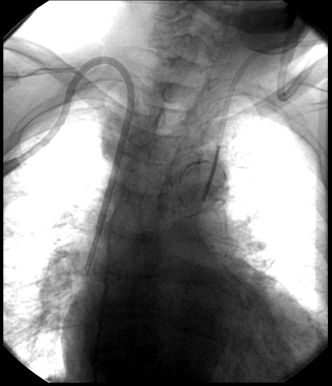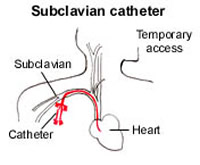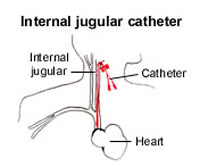Its primary function is to be used for dialysis in patients with acute renal failure. At minimum, it has two large bore lumens, one to take blood from the body and the other to return it after dialysis.
Depending on the patients requirements there may be a third lumen, which is of much finer calibre, which is used for the administration of fluids and drugs. Drugs are not usually administered through larger lumens since considerable flushing is required for the drug to be expelled from the tip, it is much easier through a finer lumen.
Once inserted, the catheter is attached with tubing to the dialysis machine. The patient’s blood flows through the dialysis machine and is filtered to remove fluids and/or toxins. The blood is then returned to the patient. An x-ray is usually performed after insertion to confirm the position of the catheter.





